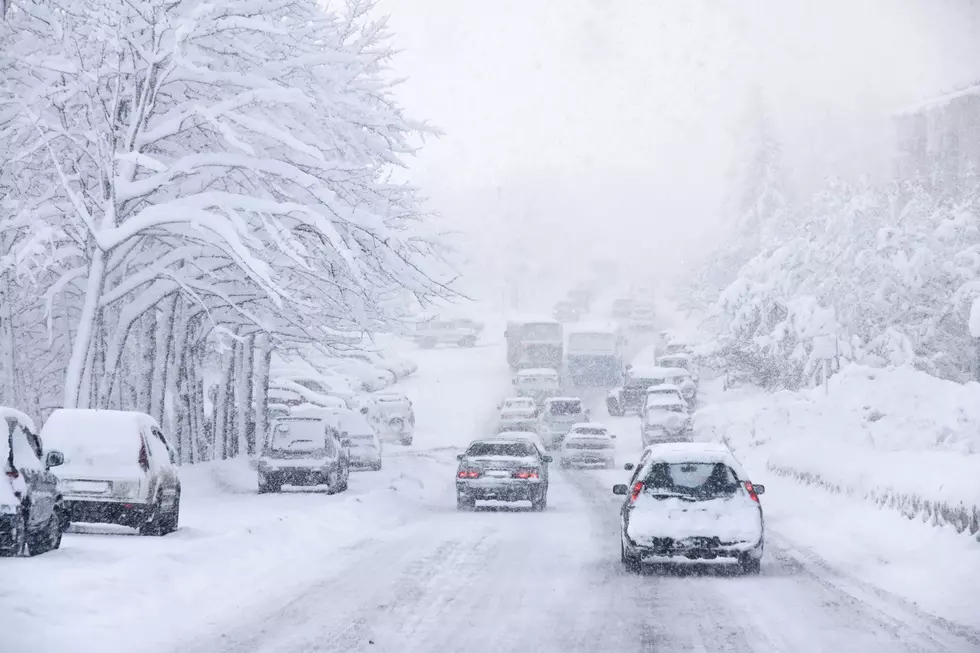
Winter Is Coming – Tips For Driving On Snow And Ice
We all know it's going to happen at some time each winter, snow and ice covered roads. And each year we seem to forget how to drive on it. Don't feel too bad, I grew up in the Midwest where normal winter driving conditions consist of 20 to 30% snow and ice covered roads. There are always fender benders to go along with the first snowfall there, too.
With the potential for wintry weather conditions later this week now seems like a good time for a quick refresher.
According to AAA Exchange, there are some simple things we can do to make our necessary travels go by without getting stuck or sliding into someone.
First, only venture out onto snow and ice covered streets if you absolutely have to. Here in North Texas the wintry conditions don't usually last all that long so if you can manage to stay home for a day or so you can avoid all of the drama.
If you absolutely must get out on the roads, take it easy. When the snow and ice compromise your vehicle's traction you won't be able to accelerate, turn, or slow down nearly as quickly as you're accustomed to. Slow and steady are the keys for getting around on winter roads.
Give the cars around you a little more space. Since nobody can maneuver as quickly as we usually do, giving the other people on the road some extra space can be the difference between a close call and a collision.
Know how your brakes work. My Dad taught me this long before anti-lock brakes became standard on vehicles. He'd get going a little bit, then gently start to apply pressure to the brake pedal to see just how much traction there was on the road. Remember that if you're on a road surface that slopes your car will instantly dive downhill when it starts to slide. Anti-lock brakes are wonderful thing, but if your traction is severely compromised you still won't be able to stop quickly. Find an open stretch of road and give them a gentle push to learn what they feel like when the traction control circuits engage. That way you'll know what to expect when you really need to stop.
Speaking of stopping, try not to. If you're approaching a red light, slow down long before you get there so your vehicle can maintain some forward momentum. It's much easier to control the direction and speed of a vehicle that's moving slowly than it is to start one moving from a complete stop.
If you must stop, try not to do it on an incline. Stopping your vehicle on a downhill roll will take much more distance that you're expecting, and getting it moving again if you're pointed uphill can be nearly impossible. If you see someone stopped on an incline be sure to leave plenty of room between them and you, they may slide backwards when they try to move forward. This may actually involve rerouting your trip. My normal path to the office involves stopping on a pretty steep incline, then pulling across and onto Kemp Boulevard. When the streets are slick I take a much flatter, and longer, route to work.
Some other things to keep in mind are proper vehicle maintenance even before the wintry weather hits. Having to inflate a low tire is a nuisance on a normal day, when the roads are slick and it's cold and windy outside it's a downright pain. So make sure your tires are aired up, check your windshield wipers, and keep an old blanket or two in the car just in case you or someone else needs it.
Consumer Reports produced a handy video on what to expect with wintry conditions and it visually illustrates many of these points.
Whether we get wintry weather this week or later in the season, these tips will help you get where you need to go when you absolutely need to get out.
See the Must-Drive Roads in Every State
More From 92.9 NiN








![Taylor Swift’s ‘No Body No Crime’ Is a Murder Ballad With a Cinematic 2020 Update [Listen]](http://townsquare.media/site/204/files/2018/08/taylor-swift-new-record-deal.jpg?w=980&q=75)
